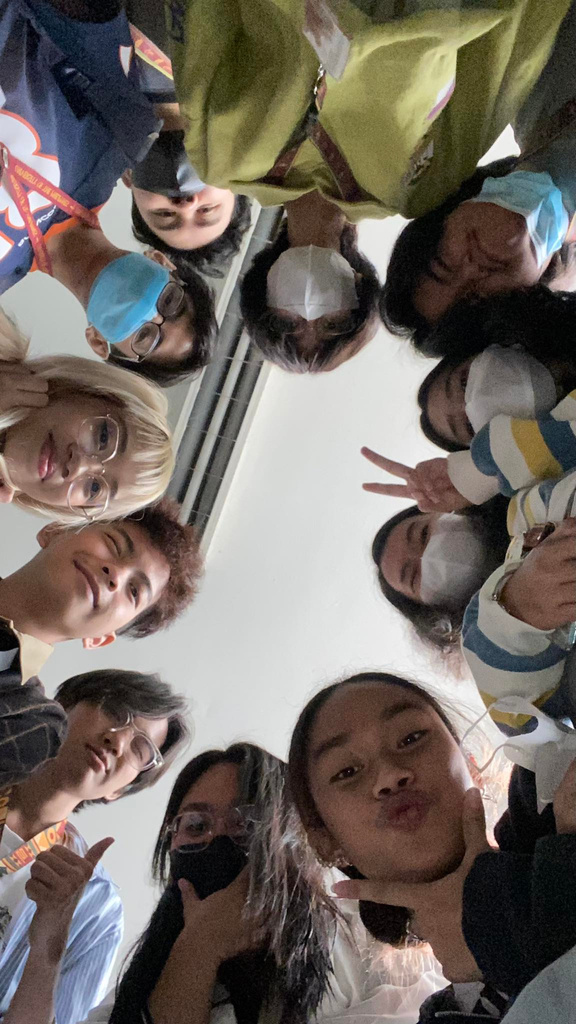
FreshmanYear!
A BLOG BY ALIASHA ARADOR
a freshie's guide to surviving the first year of college; meeting new people; and TREADING unfamiliar grounds

Introduction
Hi! I'm Aliasha Arador, a first-year Fine Arts student at the University of the Philippines Baguio.
For our final requirement in my Comm 10 course. We were given the task of tackling the knowledge that we gained from the subject creatively, so I tied them to my personal experiences as a freshman and how my Comm10 class assisted me in navigating my first year of college in a new city.
Click here to find out
Nature of Communication
Communication is the process of exchanging information between two or more parties.
Communication is essential for human interaction. It is how we share information, ideas, and emotions. Communication is also how we build relationships, solve problems, and make decisions.
As someone who left my hometown to study in a new city, I knew not one soul in Baguio.
I HAD to Communicate with new people in order to survive.
In order to communicate effectively, I had to understand its:
Elements of Communication
with the context of this photo
Sender: The person who initiates the communication process.
Receiver: The person who receives the communication message.
Message: The information that is being communicated.
Channel: The medium through which the message is transmitted.
Feedback: The response of the receiver to the message.
Reciever 1
Contemplating whether to help or not
Reciever 2
Contemplating whether to help or not
Sender
Asking for help
Message:
"Tulungan nyo ko!"
Feedback:
*Tumawa*
Key Features of Communication
Communication is a two-way process. Communication is not just about sending a message; it is also about receiving and understanding the message.
Communication is a continuous process. IT is not something that happens once and then is over; it is an ongoing process that takes place throughout our lives.
Communication is influenced by a variety of factors including the relationship between the sender and the receiver, the context in which the communication takes place, and the medium that is used.

Hi!
Hello!
Perspectives of Communication
When you understand different perspectives, you can be more aware of the different ways that people communicate and the different factors that can influence communication. This can help you to tailor your communication style to the situation and to the people you are communicating with.
Social Perspective
The social perspective of communication is a way of looking at communication that emphasizes the role of social context in shaping how people communicate. This perspective views communication as a process that is embedded in social relationships and cultures. It also emphasizes the importance of meaning-making in communication.
An example of shared meaning in the context of being a UP student is the belief that taking a photo with the oblation is a bad omen in which you will not be able to graduate on time.
Cultural Perspective
Culture is a set of shared beliefs, values, and norms that shape how people think, feel, and behave.
The cultural perspective of communication is significant because it helps us to understand how communication can be misunderstood across cultures. When people from different cultures interact, they may have different expectations about how communication should take place. This can lead to misunderstandings and conflict.
Living in Baguio exposed me to it's culture and how different it is to where I'm from.
A shock for me might be the transportation system. It was trial and error, and endless questions for me

Ethical Perspective
Meeting new people who came from different places and upbringing, respect was important in order to create a good relationship with my blockmates
The ethical perspective of communication examines the moral dimensions and responsibilities associated with communication. It considers issues such as truthfulness, privacy, confidentiality, respect, and the ethical use of communication technologies. It explores the ethical implications of communication choices and behaviors.
Rhetorical Perspective
The rhetorical perspective of communication is a way of understanding how communication is used to persuade or influence others.
The rhetorical perspective is based on the idea that communication is not simply a matter of transmitting information. Rather, communication is a process of creating meaning and persuading others. When we communicate, we are not simply saying what we mean. We are also trying to get the other person to understand what we mean and to agree with us.
After debating where to go and explore, we were persuaded to visit ili-likha.
How Comm10 helped me become a better communicator
Comm10 helped me develop fundamental communication skills, such as public speaking, active listening, and effective verbal and written communication. Through practice, feedback, and guidance from my instructor and peers, I can improve my ability to express ideas clearly, engage with others, and deliver presentations with confidence.
By learning about theories, models, and frameworks, I gained a deeper understanding of the communication process. This knowledge helped me analyze and assess my own communication patterns and identify areas for improvement.
Because of these I was able to make new relationships effectively through great communication despite the differences socially and culturally.